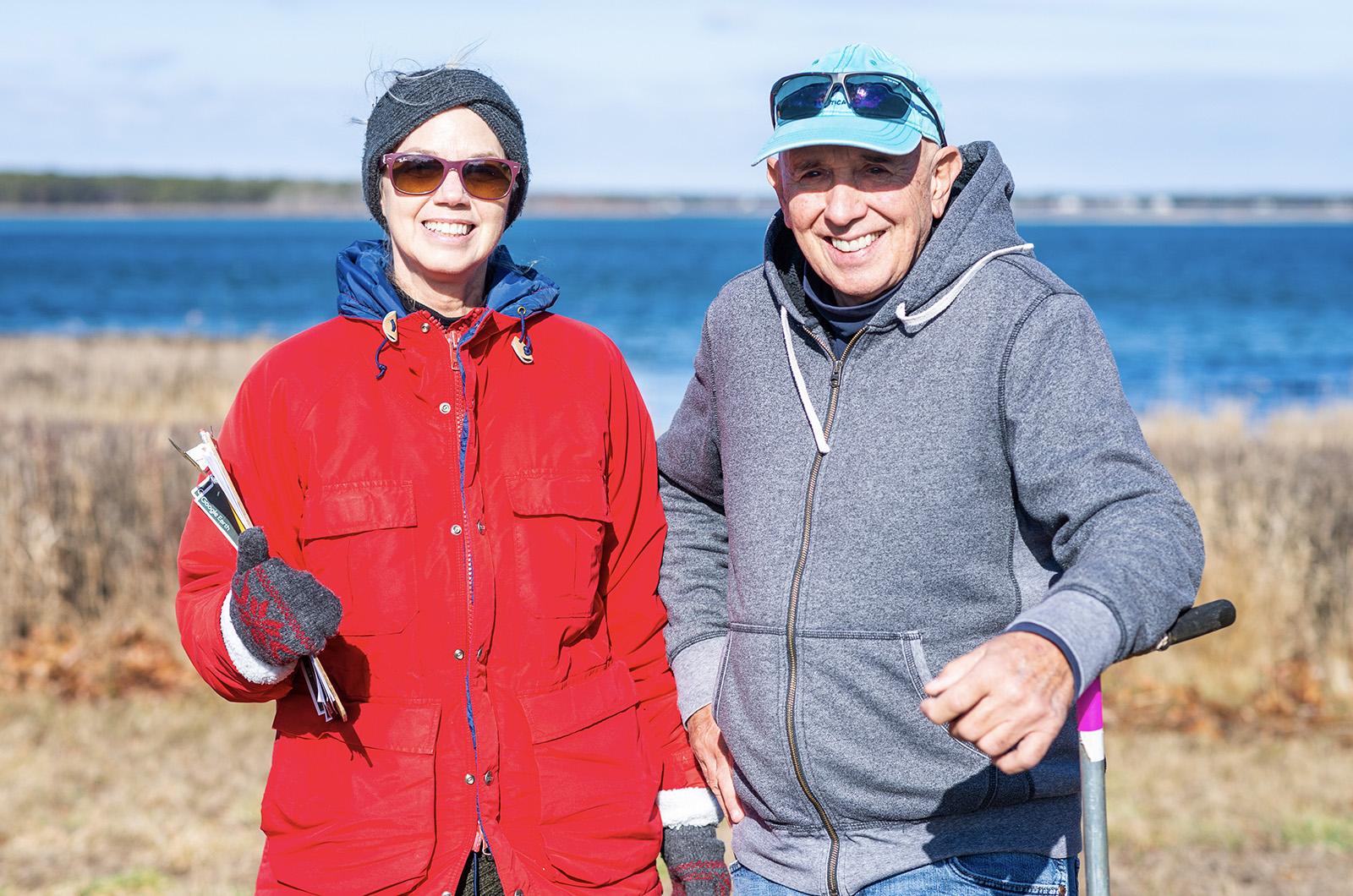On a boulder-peppered hill in Chilmark, a septic system is near completion. Tons of dense clay have been excavated and in its place a mess of tubes and concrete boxes now sit.
Only one step is left: the septic must contend with Coop.
As melted snow turned the clay to slick mud, septic inspector Doug (Coop) Cooper shuffled up to the pit, sipping a less than fresh cup of coffee.
“When I went to Woodstock we used to slip and slide on this stuff,” he said, getting near the edge to look into the liquid distribution mechanism. With more than 4,000 Island inspections under his belt, Mr. Cooper didn’t have to look for long. With a quick nod and thumbs up, his job was done. The signature would come later.

If you want to understand the fabric of the Vineyard, septic is a good place to start. It intersects with nearly every major issue on-Island, from zoning and development to water quality and environmental protection. After nearly 30 years in Island septic, and a lifetime in the field, Doug Cooper understands it better than most.
“If you remember in the NBA, before the shot clock and the three-point line, that’s when I started,” Mr. Cooper said of his origins.
After graduating from college in 1973 with a degree in geology and engineering, he got a job operating a municipal sewage
treatment plant. It was a good time to get into wastewater, he said, with the recent founding of the EPA because of “Nixon trying to escape Watergate”. Mr. Cooper then entered the public sector, working as a health agent, zoning inspector and planner in Connecticut, before heading up the state’s Department of Environmental Protection wetlands program.
It was there he met his wife Carla, the other half of Cooper Environmental Services. While Mr. Cooper deals with wastewater and geology, Mrs. Cooper brings her biological background to their business in wetland surveying.
“We are a real team,” he said.
In 1995, after the couple had their first child, they decided to move to the Vineyard.
“I had no job prospects or anything really,” Mr. Cooper said. “But that’s when the Title 5 regulations were passed.”
Title 5 was the biggest thing to happen in Massachusetts septic regulation, and thus Mr. Cooper’s employment problem was solved. The regulations specified how septic systems had to be installed and maintained, and required inspections when homes changed hands. On the Island, in particular, there was much work to be done. For one, the Island was, and still is, scattered with a multitude of cesspits.
“They were the most rudimentary wastewater treatment you could have, other than just piping it out to a brook,” Mr Cooper said.
Massachusetts was the last state in the union to ban them in 1979, meaning that hundreds of systems had to be inspected and potentially replaced. Non-cesspit systems, too, would have to be inspected — a massive undertaking on the Vineyard.
Because of the Island’s development history, Mr. Cooper said, septic had become the predominant wastewater solution.
“It was basically a backdoor approach to zoning,” he said, explaining that town planners would use septic regulations to regulate growth. That strategy also made towns reticent to construct large, centralized treatment plants.
“Towns are always dancing on that razor’s edge . . . between community character and environmental protection,” Mr. Cooper said.
And so an Island septic industry proliferated and with it a great demand for septic engineers and inspectors. And Mr. Cooper went along for the ride.
“It’s mind-blowing how busy that business is around here,” he said.
The fundamentals of septic treatment, he said, haven’t changed much since 1930: waste enters the system, solids are separated out to decompose and liquids make their way through a leaching field out into the soil. Most developments, Mr. Cooper said, have been improvements made to existing technology.
“If we think about how computers evolved since the ‘60s, where you had the Honeywell 320 that took up an entire room, well now we have tablets and phones that do the same computing. The same thing with wastewater technology, it’s just like going to transistors from tubes,” he said.
But just as important as the technology is the environment in which septics are installed. It all boils down to geology. As Mr. Cooper drove up to his inspection job, he reveled in its geologic history, the massive boulders and rolling hills pushed into a great mass on the edge of the Island by ancient glaciers.
“These are all made of marine clays,” he said. “The weight of the ice pressed down on those clays and flexed them up, and they bent like plastic.”
That substrate, he said, poses certain challenges. Continuing uphill to the inspection, he pointed out the little surface streams and rivulets forming on the surface of the soil. Just as the topsoil struggles to absorb rainwater, neither can it easily dispel septic fluids.
In other parts of the Island, composed of sandy soils brought down by glacial streams, drainage is much easier, leading to a different problem. Just as septic runoff can be easily drained, so too can septic pollutants, Mr. Cooper explained.
Even septic technology and regulations continue to change. With emphasis on package plant systems and nitrogen pollution growing, Mr. Cooper still finds his work as exhilarating as ever.
“I don’t want to get too Zen about it, but it’s just what I do,” he said.
Mr. Cooper spends most of his days driving around the Island, looking at septics and wetlands and thinking about the land. He said he sometimes feels a bit like Johnny Cash in his song I’ve Been Everywhere.
“I’ve driven down nearly every road on this Island,” he said. “Sometimes people are confused and if they ever ask me who I am, I just tell ‘em, ‘It’s Coop!’”








Comments (13)
Comments
Comment policy »